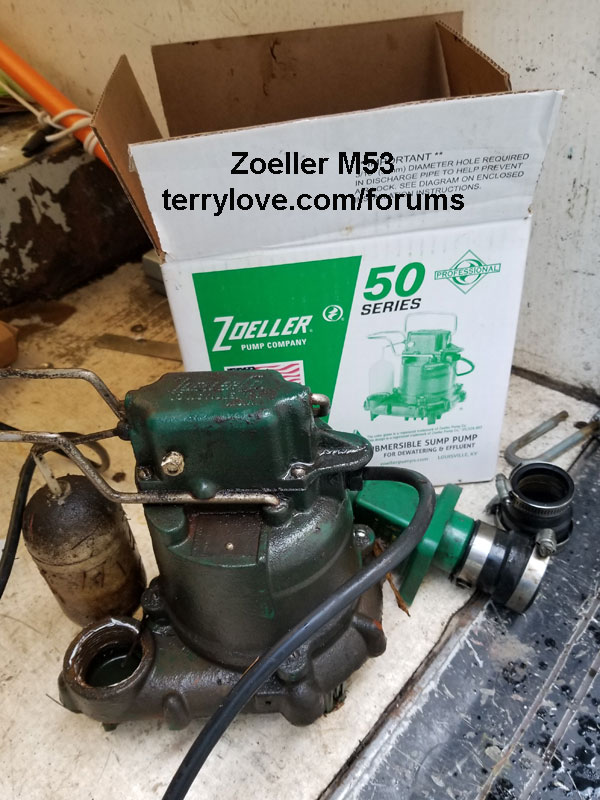I had a small scare recently when the water alarm on my sump went off due to a high water level. Fortunately the pump eventually cycled and cleared sump pit before I had any flooding. It could be a fluke or maybe the switch on the unit is becoming intermittent, etc.
The unit is a 15 year old Zoeller (not sure of the model as I can't access it without uninstalling it) and I'm contemplating a replacement as it has never been serviced and is probably approaching its end of life. My understanding is that 10-15 years is typical for sump pump longevity with the best models going for maybe 20-25 years. I'm considering proactive replacement or at least having a new unit on hand with a flex tube in the event this one completely fails at an inopportune time.
It sits below a structural floor in a 24" pit in the basement crawl space and the well itself is about 5' deep.
The PVC discharge tube is 2" and there is a Zoeller brand check valve with 2" slip fittings hooking up to 2" PVC on either end.
Most of the new models I am looking at have 1.5" outlet threads. How big of a deal would it be to adapt 1.5" to 2" discharge? Would it affect the head shutoff, etc? I have about 15' of head height from the sump to the outlet in the home's rim joist.
I don't find too many models that have 2" discharge.... are they less common now than they used to be? I am considering a Liberty 287 with the magnetic switch as the replacement for this unit, however this unit has a 1.5 npt discharge threading. The pump can run several times a week in the summertime due to overwatering by my upslope neighbors but I have never experienced a situation where massive amounts of water needed to be quickly evacuated from the sump pit in the 15 years I've owned the home (original owner).
Thanks!
The unit is a 15 year old Zoeller (not sure of the model as I can't access it without uninstalling it) and I'm contemplating a replacement as it has never been serviced and is probably approaching its end of life. My understanding is that 10-15 years is typical for sump pump longevity with the best models going for maybe 20-25 years. I'm considering proactive replacement or at least having a new unit on hand with a flex tube in the event this one completely fails at an inopportune time.
It sits below a structural floor in a 24" pit in the basement crawl space and the well itself is about 5' deep.
The PVC discharge tube is 2" and there is a Zoeller brand check valve with 2" slip fittings hooking up to 2" PVC on either end.
Most of the new models I am looking at have 1.5" outlet threads. How big of a deal would it be to adapt 1.5" to 2" discharge? Would it affect the head shutoff, etc? I have about 15' of head height from the sump to the outlet in the home's rim joist.
I don't find too many models that have 2" discharge.... are they less common now than they used to be? I am considering a Liberty 287 with the magnetic switch as the replacement for this unit, however this unit has a 1.5 npt discharge threading. The pump can run several times a week in the summertime due to overwatering by my upslope neighbors but I have never experienced a situation where massive amounts of water needed to be quickly evacuated from the sump pit in the 15 years I've owned the home (original owner).
Thanks!

